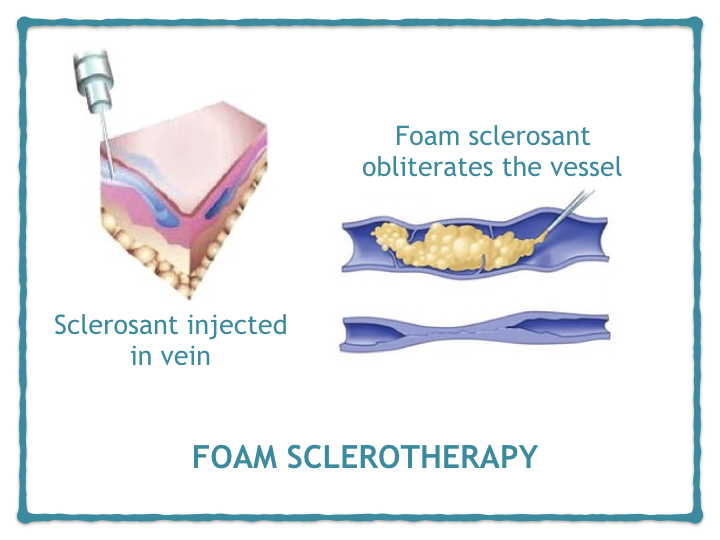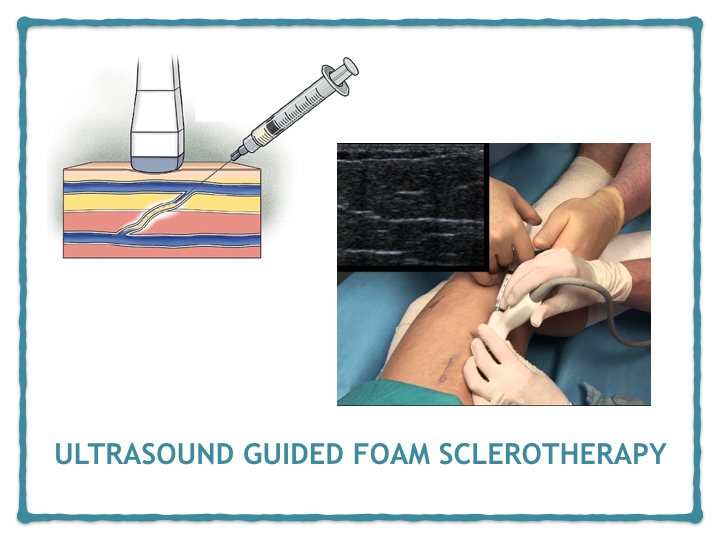Loading...
What is Sclerotherapy?
Sclerotherapy comes from Greek words scleros (meaning 'to make hard') and therapea (meaning 'treatment'). It is a safe and effective treatment for varicose, reticular and spider veins.
What types of varicose veins are suitable for Sclerotherapy?
Sclerotherapy is a popular choice for the following:
-
Spider veins
-
Reticular veins
-
Small varicose veins that come after surgery (by newer techniques or conventional surgery)
-
Large varicose veins, in combination with other minimally invasive techniques
How is Sclerotherapy done?
A thin needle is used to inject a drug (sclerosant) in to the vein, which causes the vein to shrink. Pressure is applied to the injected site, and compression stockings are advised for a few (usually 2-3) weeks thereafter. After a brief period of rest, you can resume walking and other routine activities. It is recommended to avoid heavy strenuous activity for a few weeks after the procedure.
How does the sclerosant work on the vein?
The sclerosant kills the cells in the vein wall causing inflammation. When inflamed, the vein becomes hard to the touch. The body eats away the dead vein over several months, leaving only a tiny bit of scar tissue behind.
What is Ultrasound Guided Foam Sclerotherapy (UGFS)?
Sclerotherapy is usually done for surface veins that are visible on the skin. It can also be done for deeper veins, where the vein is injected under ultrasound guidance. This is called Ultrasound Guided Foam Sclerotherapy (UGFS).
What is Microsclerotherapy?
Microsclerotherapy is a procedure used to treat spider veins (telangectasias or thread veins) of the legs. It is a relatively straightforward procedure which involves injecting a sclerosant liquid into the veins which destroys them and causes them to disappear over time.
What are the precautions to be taken after sclerotherapy?
Patients are encouraged not to remove the stockings until 2-3 weeks post procedure (as advised by their doctor). If they are removed too early, blood will return into the vein and it will clot, leaving a brown staining. This staining can fade over the following months but sometimes it can become permanent.
What are the complications of Sclerotherapy?
Sclerotherapy is often associated with bruising and staining at the injection site. This is normal and usually resolves in approximately a couple of weeks. Some people will get brown stains but these are usually the people who remove their stockings against medical advice, before the recommended time.
Very rarely, patients may get an ulcer. This occurs when some of the sclerosant enters into a microscopic artery. Fortunately this is very rare.
Allergic reactions to the sclerosant (injected drug) are rare. Rarely, deep vein thrombosis may occur if the drug is injected or seeps into the deep veins.




